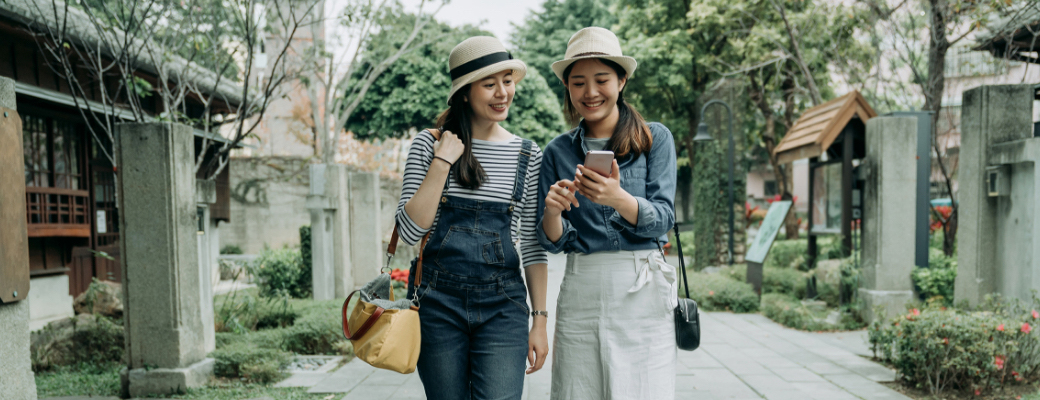
Digital Ticket
On sale: a set ticket including the Rapi:t , admission to the Tsutenkaku Observation Deck, and Nankai Soba!

Visit Awashima Shrine with many events throughout the year
Awashima Shrine is famous for the Hina-nagashi ritual, a ritual of floating the hina dolls in the shrine. This article describes the history of Awashima Shrine, which is said to bring blessings for women's diseases, easy childbirth, and love fulfillment, as well as its events, charms, and access information. Please use it as a reference for your visit to the shrine.
Awashima Shrine, located in Kada, Wakayama City, is the head shrine of all Awashima shrines in Japan. Famous for the Hina-nagashi ritual, the hall of worship is crammed full of dolls! Many visitors are surprised to see this unusual sight spread out before their eyes.
In addition to doll offerings, Awashima Shrine is also popular as a women's power spot because of its benefits for women's illnesses, easy childbirth, and love fulfillment.
The roots of such Awashima Shrine lie on Tomogashima.
Once upon a time, Empress Jingu (Jingu Kogo), on her way back from a campaign in Korea, encountered a violent storm at the Seto Inland Sea. As she prayed in her ship, which was about to sink, she was told to "throw the ship's toma into the sea and let the current carry the ship forward," and she arrived at Tomogashima. There, Sukuna-Hikono-no-mikoto and Omunachi-no-mikoto were enshrined, and Empress Jingu dedicated the treasures she had brought back from the three Koreas as a token of her gratitude.
Later, Emperor Nintoku, grandson of Empress Jingu, heard about this story when he came to Tomogashima to hunt, moved the shrine to Kata on the opposite shore, and built a shrine pavilion. This is said to be the beginning of Awashima Shrine.
From here, let's take a look at the annual events of Awashima Shrine.
Hari Matsuri (Needle Festival)
Sukunahiko-no-mikoto, enshrined at Awashima Shrine, is the god who first introduced the art of sewing. Every year, needles donated from all over Japan are purified at the main shrine, placed in a mound of needles, sprinkled with salt, and returned to the earth as a memorial service.
The Hari Matsuri is held every year on February 8 at 11:00 a.m.
Hina Matsuri (Dolls' Festival)
Awashima Shrine is so well known for its Hina Matsuri (Dolls' Festival). The dolls placed throughout the shrine grounds as offerings are symbolic of this event.
The word "Hina Matsuri" is said to have originated from "Sukuna-Hikona Festival" named after "Sukunahiko-no-mikoto," the deity of Awashima Shrine. It is also said that the reason why Hina Matsuri is on March 3 is because the shrine was moved from Tomogashima to Kada on the opposite shore on March 3 in the 5th year of Emperor Nintoku.
Awashima Shrine, which is associated with the Hina Matsuri, holds a ritual called "Hina-nagashi" at 12:00 p.m. on March 3 every year, in which Hina dolls are carried on a white wooden boat and floated out to the sea in Kada. The sight of the dolls on the boat as they make their way to the surface of the sea is unintentionally heartwarming.
Other Events
[Summer Festival]: July 31 (after sunset)
A festival to pray for good health during the summer by going through the set-up of thatched rings. A thatched ring to take home will be given free of charge.
[Autumn Grand Festival]: October 3 (11:00 a.m.)
The festival is also a tax festival for sake brewers. During the Autumn Grand Festival, also known as the "Amazake Festival," amazake (sweet sake) is made from newly harvested rice and offered at the temple. The amazake is served free of charge to visitors to the temple to pray for good health through the winter.
[Tanabata Festival]: Late June to July 7
Children can write their dreams and wishes on strips of paper.
Next, let us introduce the good luck charms(Omamori) available at Awashima Shrine.
The first one is a charm for good health.
There are three types: longevity (turtle), pink, and green (gourd).
Amulet for safe delivery
There are three types of amulets: pouch, strap, and purse.
Child-bearing charms
There are 4 kinds of charms: 2-color set charm, pouch charm, tadpole charm, and doll.
Marriage
There are 7 kinds: strawberry, happy heart, red string, cherry, love climbing, four-leaf clover, and shell.
To ward off bad luck
There are 9 kinds of charms: Nanten chopsticks, Nanten guardian, Wish-awarding frog, Good luck ball, Happiness frog, Strap, Owl (2 kinds), and Purse.
Heart Ema
There are three types: red, white, and pink.
Traffic safety
There are 8 types: vermilion (white string), wooden tag (vermilion and green), with cue board, car shaped strap, and key chain (gold, light blue, and pink).
Hours of visitation: 9:00-17:00
Hours of the shop office: 9:00 - 17:00
Purification Hours: 11:00 and 13:00 (by appointment only)
Dolls reception hours: 9:00 - 16:00 (except on days when Buddhist services are not available)
Admission to the Treasure House: Adults 300 yen, children 200 yen.
(Group reservations only. However, the museum is closed for the time being due to the spread of the new coronavirus)
Address: 118 Kada, Wakayama City, Wakayama Prefecture
How to get there by train (train is recommended for outings!) : Approx. 20 minutes walk from "Kada Station" of Nankai Electric Railway Kata Line.
Directions by Car: Approximately 40 minutes by car from the Wakayama Interchange on the Hanwa Expressway.
・Parking information: Available (15 cars, free for worshippers for up to 30 minutes after entering the parking lot).
Awashima Shrine is a place where you can pray for blessings for women's health, easy childbirth, and love fulfillment. The many hina dolls lined up in the hall of worship make you feel as if you are visiting another world. Please visit Awashima Shrine to experience a mysterious atmosphere that you cannot find at any other shrine.

